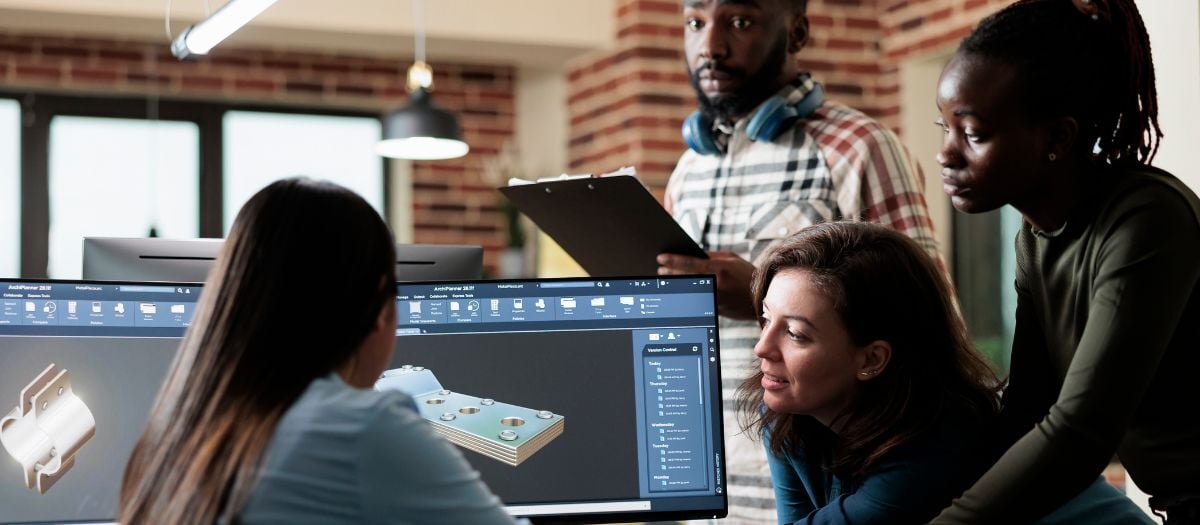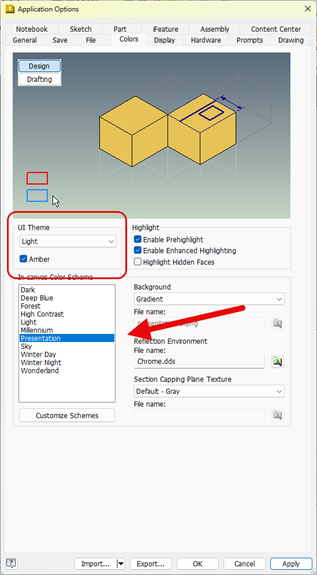
What is Copy Design in Autodesk Vault?
In Autodesk® Vault™, Copy Design is an internal utility that makes copying simple or complex designs more efficient. This utility can be used on many files within Vault, but the true power comes when creating copies of Inventor files such as parts, assemblies, presentations, and/or drawings.
When Should You Use Copy Design in Autodesk Vault?
Scenario A: A new product design is underway. The new design shares a 95% similarity with an existing design, which makes the older design a great "quick-start” template for the new design. Copy Design can be used to duplicate the older design and reuse the components that fit the 95% match window.
Scenario B: An existing product design needs to be sent out for quotes to subcontractors. The design files contain too much proprietary information and unnecessary internal components that must be removed before submitting. Copy Design can create a duplicate of all files, enabling you to edit the copy and remove any information not required for quoting – while keeping the original design untouched/unmodified.
Scenario C: Creating Left-hand and Right-hand configurations. After completing the Left-Hand configuration of a design (including parts, assemblies, and drawings), you may need to create a Right-Hand configuration. Copy Design allows you to duplicate all files from the Left-Hand design, making it easy to apply the necessary directional edits within the CAD software without altering the original files.
Wait, This Isn’t How I Remember Copy Design…
Several releases ago, Autodesk updated the Copy Design utility, bringing significant changes to its interface and functionality, with some mixed reactions from users. This guide serves as an introduction to the new Copy Design interface, explaining how it works and flows. We'll walk through the process using an assembly drawing as an example, but keep in mind that the steps apply to any supported file within Autodesk Vault.
Autodesk Vault: Copy Design Walkthrough
-
Locate the desired file, right-click and choose Copy Design (Alternatively, you can navigate to the Edit menu and choose Copy Design).
-
In our Machine Vise design, we will make a new vise with different jaw depths. In this case, we'll copy the drawing, the top-level assembly (IAM), and the base part file (Base.ipt) to accommodate the new size. All other components will remain unchanged and be reused in the new design. See Figure A.

-
There are multiple ways to copy a file in Autodesk Vault. When you right-click on any file, a shortcut menu appears with the options: Copy, Copy To… and Replace. Figure B outlines each of these options. Under the Actions menu, there are even more options for copying files, which we will explore in a future post.
-
Copy – Sets the action to copy the currently selected file(s). If no destination path is specified in the future steps, then the new file will be saved in the same folder as the original The name of the new copy will automatically be set to “Copy of <originalfilename>.extension”.
-
Copy To… – Sets the action to copy the currently selected file(s) and immediately opens the Select Vault Location dialogue box, allowing you to specify an alternative folder location for the new copy.
-
Replace – Opens the Select File dialogue box, allowing you to browse through the Vault folders and select a different file to replace the currently selected file.
Figure B
-
-
To create a copy of the drawing, top-level IAM and the Base.ipt, under the Destination Path column, click the “…” button next to the file. See Figure C1. This button opens up the Vault folder structure (Figure C2), where you can specify the destination to the copied file(s).


Figure C1 Figure C2
-
Specifying a destination folder for a bottom component (the Base.ipt in this example) will automatically make copies for any IAM's that contain the bottom component, as well as the associating drawing files. See Figure D. In this example, only the Base.ipt destination was specified. The top-level IAM and the Drawing were automatically set to “Copy To” and the Destination Path set to match that of Base.ipt.

Figure D
-
In the Copy Design interface, you can right-click on any file listed and choose to Exclude it from the process or even Reuse if you accidentally marked a file for copying. See Figure E.
-
The Revision and the State columns (See Figure F) are relevant only for Vault Pro Revision Schemes and Lifecycle States. For this article, we are proceeding as though we are using Vault Basic, which does NOT have either of those functions.


Figure E Figure F
- On the right side of the Copy Design dialog box, you can adjust the naming convention used for the files being copied. See Figure G for reference. By default, the Destination Name is automatically populated to include the predefined Prefix "Copy of". This prefix can be changed or removed by editing the contents in the Prefix Additionally, the Base Name can be adjusted to be different from the source file name. Lastly, the Suffix column allows you to add a suffix to the copied files (e.g., Base_001, Base_002, Base_Alternate, Base_Extended, etc.).

Figure G
- Once the configurations are complete, click Execute Copy at the top of the Copy Design interface. When the Copy Design is complete, the interface will display the file status in the Copy Design Status See Figure H for reference (far right column).

Figure H
How to Use Copy Design in Autodesk Vault
- Identify file, right-click, choose Copy Design.
- Set the Destination Path for files to be copied.
- Files being reused do NOT need to be changed/adjusted.
- Adjust the naming (Prefix, Base Name, Suffix) for each copied file.
- Click Execute Copy across the top of the Copy Design interface.
- Review the Copy Design Status column for successful vs failed copies.
Conclusion
Copy Design is a powerful tool that allows you to quickly generate new files ready for modification, reducing lead times from days or weeks to just minutes or hours. Stay tuned for future posts where we’ll explore more complex scenarios, such as handling sub-assemblies, multiple Copy Design operations, and utilizing Numbering Scheme.






Comments